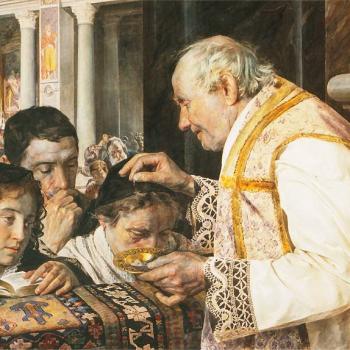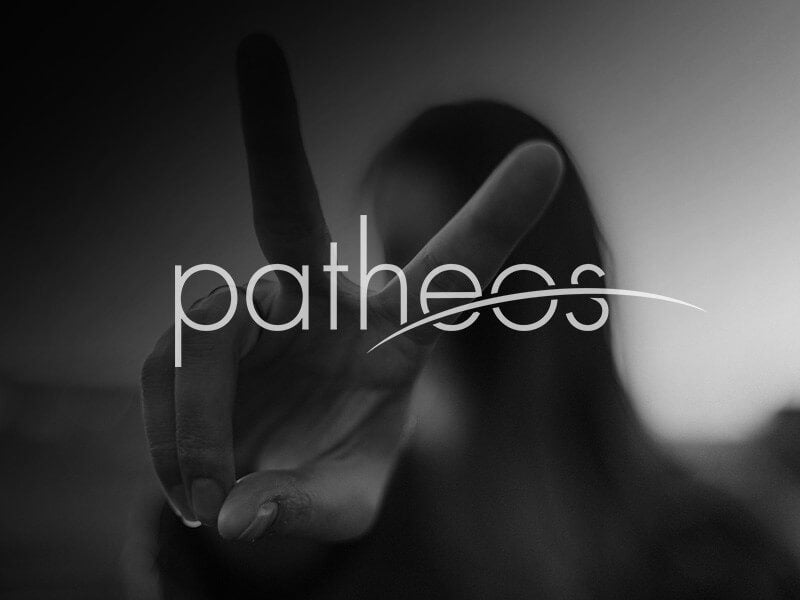Vox Nova is pleased to welcome a guest post by Sr. Christina M. Neumann, OSF, a Franciscan sister from North Dakota. She regularly blogs for her community at Our Franciscan Fiat.
As Catholics, we’re all familiar with meatless Fridays this time of year, but have you ever heard the rule about “no ham during Lent?”
I work at St. Anne’s, an assisted living facility, and takes turns with one of my fellow Sisters in playing organ for daily Mass in our chapel.
This discussion of “no ham during Lent” came about because she sometimes enjoys embellishing certain pieces of music during Mass, which she refers to as “ham[ming] it up.”
Several weeks back, when Lent was approaching, I reminded her about liturgical directives for this solemn season. According to the General Instruction for the Roman Missal, musical instruments are only to be used during Mass to provide necessary support for the singing at this time of year. Thus, there is to be “no ham during Lent,” I tease her.
What makes this fun is that, in all seriousness, Lent is a time for more abstinence from meat. Teasing about ham not being allowed fits in with the dietary restrictions involved in this penitential period.
Fortunately, directives do allow for ‘ham’ on solemnities as well as the fourth Sunday of Lent, Laetare Sunday. Maybe, were allowed ham and eggs on those occasions.
Actually, in times past, eggs were also not allowed during Lent. Here at St. Anne’s, we’ve had the tradition of serving potato pancakes on Fat Tuesday. Pancakes were commonly made on that day to help use up the eggs in one’s house before Lent started.
One may ask what the point is of abstaining from ham or doing any other penance for that matter, during Lent. It is, indeed, worth thinking about the spiritual aspects of our outward practices.
During Lent, we our uniting ourselves with Jesus’ fast of forty days in the desert, which He undertook prior to His public ministry. The Catechism of the Catholic Church teaches us that times of fasting “help us acquire mastery over our instincts and freedom of heart.” (2043) We are preparing ourselves to better commemorate Christ’s passion, death and resurrection. Fasting, along with prayer and charity to those in need, helps us on our Lenten journey of conversion.
Fasting can actually be deeply tied to charity toward the needy (almsgiving). It seems to have been an understanding in the past that by not indulging in as much food the faithful could afford to share more with the poor. The same can be true today. For example, one could decide not to “eat out” during the season of Lent. The money freed in one’s monthly budget by this sacrifice could be given to a local charity.
On a spiritual level, we can also fast with a special intention for someone in need. We may have a relative who is struggling, for example, with her marriage. We can choose to make some sacrifice, offering it for the intention of this loved one. We can unite our little sacrifice with that of Jesus.
We can do this, in a special way, each time we attend Mass, placing our needs, intentions, and yes, our sacrifices, on the altar. In fact, the Eucharist, according to the Catechism of the Catholic Church, is intrinsically tied to our fasting. Christ’s Eucharistic presence inspires and nourishes this process of penance and conversion (see CCC 1436).
This Lenten season, when you notice that the music is less elaborate or that your stomach is rumbling from some small sacrifice, remember the big picture, that we’re on a journey, with Jesus, moving toward the joy of His resurrection. We’re drawing closer to Him.
This makes it worthwhile to have “no ham during Lent.”














